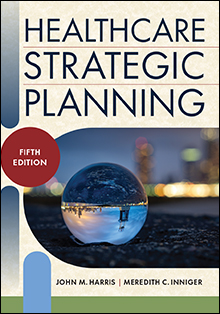For most hospitals and health systems, orthopedic services are a major contributor to the bottom line and indirectly support many other critical acute care services. Demand for orthopedic services is increasing—but so is competition among providers. To protect orthopedic share and margin in this environment, it will be essential for health systems and hospitals to […]
Becker's Hospital Review
March 2018
When health system leaders are asked how they intend to make their ambulatory networks more consumer friendly, many point to their organization’s new one-stop ambulatory care center, on-line scheduling, patient portal or upcoming telehealth plans. In other words, they refer to specific tactics or initiatives rather than describing an overarching strategy for consumer engagement. […]
Becker's Hospital Review
March 2018
Newton’s first law of motion states, in part, that a body in motion will remain in motion at the same velocity and direction unless acted on by an external force. Organizations tend to behave in the same manner. The advent of new leadership provides a moment of opportunity when a new CEO can set […]
Becker's Hospital Review
August 2017
In today’s healthcare environment, convenient access to ambulatory services is more important than ever before. In part due to the introduction of value-based payment models that reward providers for lowering the total cost of care for patients, inpatient volumes in many markets have been flat or declining for several years. Success under value-based payment […]
Becker's Hospital Review
February 2018
There has been tremendous growth in freestanding emergency departments (FSEDs), with a more than 100% increase in the number of such EDs between 2008 and 2016. The popularity of FSEDs is rooted in their potential to increase community access to vital healthcare resources. Consumers perceive them as having more extensive clinical capabilities than an urgent […]
A strategic plan provides a roadmap for where a hospital or health system will focus its efforts and resources. The plan must generate financial results required for long term success. Therefore, financial implications should be integrated throughout the planning process to focus on the initiatives that will have the most profound positive impact on the […]
Meredith Inniger, Editor
and Contributing Authors
Healthcare Strategic Planning, Fifth Edition provides guidance for every stage of strategic planning and implementation: analyzing the environment, crafting strategy, putting the plan into action, and assessing the results. It describes the crucial decisions that must be made and the preparatory steps that must be taken for effective planning. This new edition contains the most recent […]
Hospitals and health systems have not historically focused on post-acute care. However, several factors are now motivating them to develop or strengthen their ties with post-acute care providers and establish an explicit post-acute care strategy. Acute care providers need to develop strong collaborative relationships with post-acute providers to ensure access to the post-acute care capacity […]

